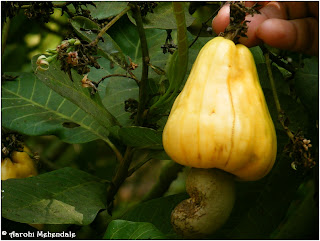After spending almost 18 hours travelling to Prague, the first thing I did after checking into Hotel Astoria was spreading out all the tourist maps and brochures and planning what to do over the next two days. Due to some mix-up about the dates and bookings, the organizers of the conference I had come to attend were putting me up for two additional days and I was not complaining. There is just so much to see in Prague that two months may also not be sufficient. I decided to use the two full days for visiting the ‘must-sees’ and leave the rest for the evenings after the conference sessions. Fortunately, the hotel is located within the Old Town and is walking distance from many attractions. I have always believed that the best way to experience a city is on foot so I decided to keep the metro and tram travel to the minimum.
First, I walked to the Old Town Square. It is a vibrant place lined with several small stalls selling food, flowers and gift items. A 360 degree view of the Old Town Square gives a glimpse of multi-styled architectural constructions. At one end of the square, is the famous Astronomical Clock Tower. Considered to be the third oldest clock in the world (built in early 15th century), it is fascinating and intriguing to observe how it works. I wish I had someone with me who could explain it to me because I spent a lot of time trying to figure it out. I also realized that one has to see it over different seasons, at different points in time to appreciate all its features. It has a calendar dial with paintings and notings for all twelve months (but too tiny to read from ground level). There is an astronomical dial with the earth in the background, the view of the sky, the sun and the moon; then the clock also shows time as per 24 hour style, showing the adjustments due to varying times of sunrise and sunset in summer and winter. There are also figures depicting vanity, greed, death and pleasure that move every hour. On the top are figures of the twelve Apostles who also make an appearance every hour. Wish I had more time, I thought.
Then I walked over the Charles Bridge constructed over 600 years ago across River Vlatava. Standing on the bridge, it is easy to understand why Prague is called the ‘City of Spires’ with countless spires of different architectural styles dotting the skyline. Among all the bridges over Vlatava (we can see a series of them), Charles Bridge is the most famous and historic one. The fact that it has survived after so many years, despite the wars and floods makes it special. There are 30 statues placed on either side of the bridge. Like others, I too touched the statute of St. John of Nepomuk, wishing for good luck and hoping to come again to Prague. Only pedestrian traffic is allowed on the bridge and I spent hours watching the artists painting and sketching, musicians playing instruments along the bridge and tourists posing for pictures.
 |
| View from the Charles Bridge - Prague Castle in the background |
I decided to spend the entire next day at the Prague Castle, considered to be the biggest castle in the world. I bought myself a ticket that allowed me to see all attractions open to public. Built in 9th century, it has been a seat of religious and political power. Crown jewels are also kept at the Castle under heavy security and are rarely put on display for tourists. St. Vitus Cathedral has beautiful stained glass paintings and also houses the relics of St. Wenceslas. I climbed up the steep narrow spiral staircase of the tower to get an aerial view of Prague. After taking a quick bite of packed fruits, I was ready to explore the other parts of the castle- the Old Royal Palace, Royal Gardens, St. George’s Basilica and the Powder Tower. I missed seeing the change of guards! By the end of the day, I decided I had walked enough and took a tram and the metro back to the hotel room. In the evening, I set out again to see how the old Town looked like at night. It seemed like it had just come to life all over again and near the Charles Bridge the party had just begun. After taking in the sights, sounds and smells of Prague, after walking up and down the streets of Old Town, I felt at home and forgot that it was less than 48 hours since I had first stepped into this beautiful city. I had enjoyed being footloose in Prague and staying outdoors. I was now ready to attend the conference.









